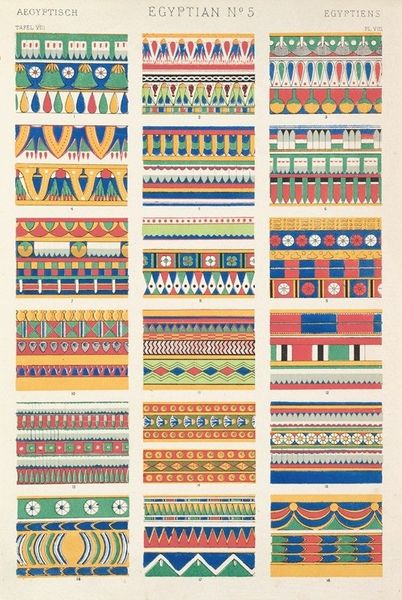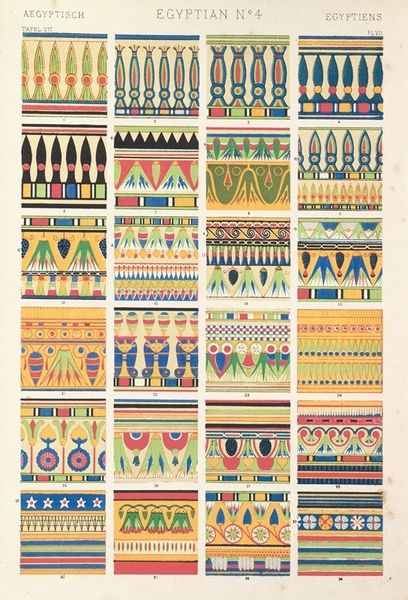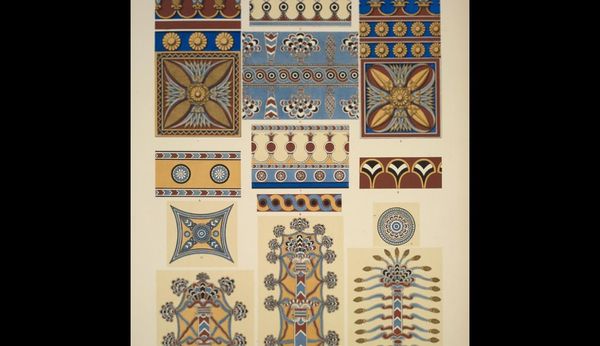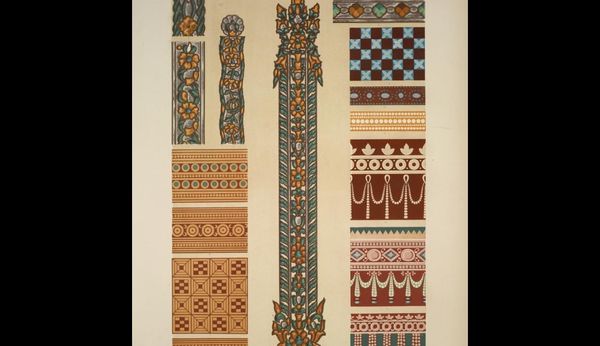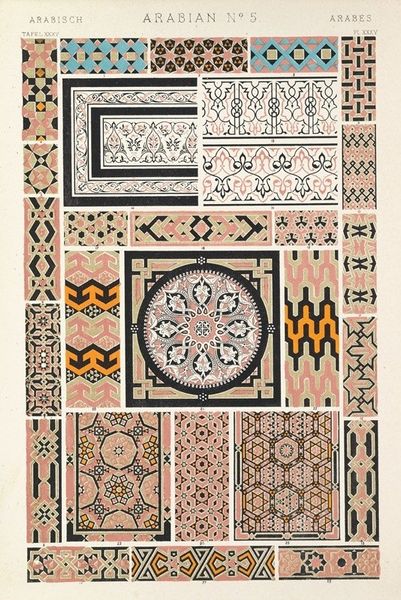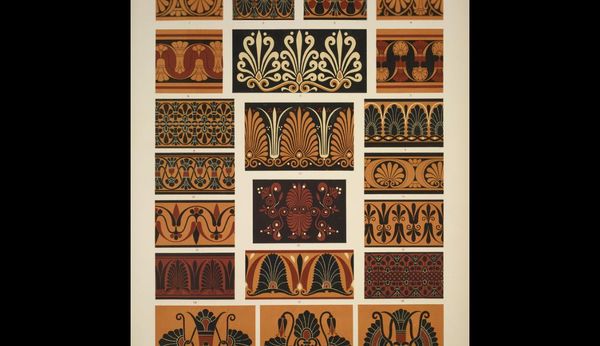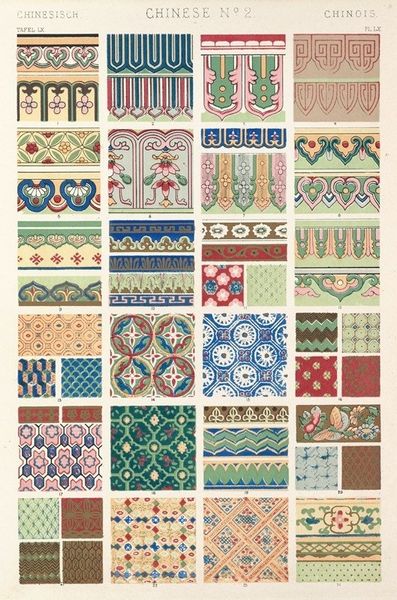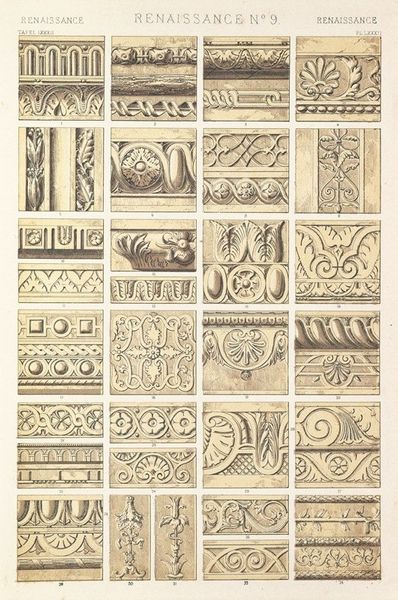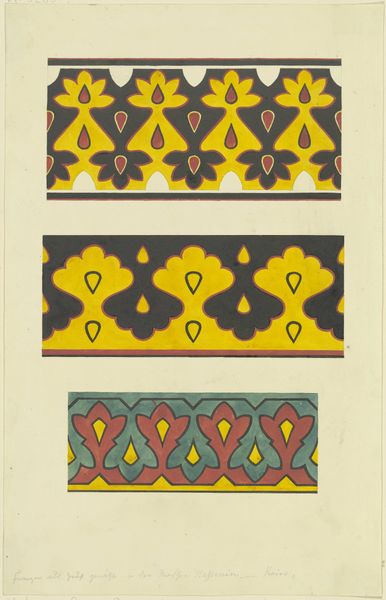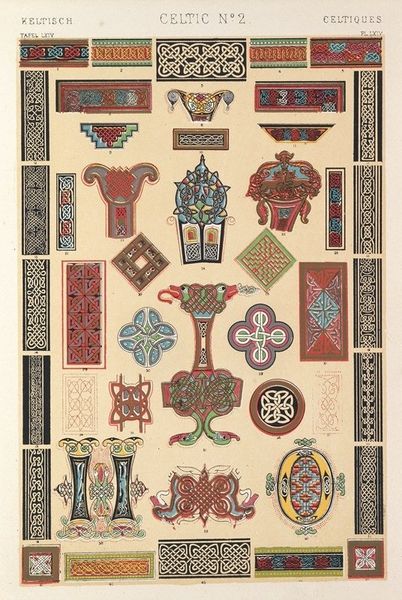
Architecture : couronnements & frises fleuronnées (nécropole de Thèbes XVIIIe - XXe dynasties) 1878
0:00
0:00
drawing, print
#
drawing
# print
#
ancient-egyptian-art
#
geometric
#
ancient-mediterranean
#
line
#
decorative-art
Dimensions: 45 x 34 cm
Copyright: Public domain
Émile Prisse d'Avennes created this print of architectural details from the Theban Necropolis using lithography. Dominating these friezes are floral motifs—lotuses, palmettes, and papyrus—symbols deeply rooted in Egyptian cosmology. The lotus, especially, represents creation and rebirth, emerging from the primordial waters, while the papyrus evokes the fertile Nile Delta. Observe how these motifs echo across millennia. The stylized palmette, for instance, migrates into Greek art as the anthemion, adorning temples and pottery. Consider the lotus: its form shifts, yet it persists—in Renaissance frescoes, art nouveau lamps, and even modern logos. The persistence reveals a collective yearning for renewal, a subconscious echo of ancient beliefs. These patterns elicit an emotional response: the rhythmic repetition soothes, the vibrant colors uplift, and the balanced compositions evoke harmony. They are not merely decorative; they are carriers of cultural memory. The motifs of death and rebirth invite us to ponder life’s cyclical nature, a reminder of the continuous flow of existence. Thus, these decorative elements, born from the landscape of the Nile, resonate through time, evolving yet retaining their primal power. The cyclical progression is a testament to the enduring human quest for meaning.
Comments
No comments
Be the first to comment and join the conversation on the ultimate creative platform.
